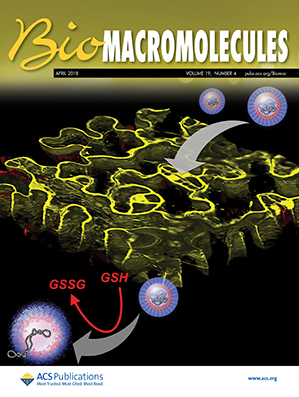Applying Computational Protein Design to Engineer Affibodies for Affinity-controlled Delivery of Vascular Endothelial Growth Factor and Platelet-Derived Growth Factor
IF 5.4
2区 化学
Q1 BIOCHEMISTRY & MOLECULAR BIOLOGY
引用次数: 0
Abstract
Vascular endothelial growth factor (VEGF) and platelet-derived growth factor (PDGF) play coordinated roles in angiogenesis. However, current biomaterial delivery vehicles for these proteins have a limited ability to precisely control the kinetics of protein release, preventing systematic exploration of their temporal effects. Here, we combined yeast surface display and computational protein design to engineer eight VEGF-specific and PDGF-specific protein binders called affibodies with a broad range of affinities for controlled protein release. Soluble affibodies modulated protein bioactivity as evidenced by changes in VEGF-induced endothelial cell proliferation and luminescent output of a PDGF-responsive cell line. Affibody-conjugated hydrogels enabled tunable protein release over 7 days. VEGF and PDGF released from affibody-conjugated hydrogels exhibited higher bioactivity than proteins released from hydrogels without affibodies, suggesting that these engineered affinity interactions could prolong protein bioactivity. This work underscores the power of computational protein design to enhance biomaterial functionality, creating a platform for tunable protein delivery.
- Download: Download high-res image (125KB)
- Download: Download full-size image
应用计算蛋白设计来工程修饰血管内皮生长因子和血小板衍生生长因子的亲和控制递送。
血管内皮生长因子(VEGF)和血小板衍生生长因子(PDGF)在血管生成中起协同作用。然而,目前这些蛋白质的生物材料递送载体在精确控制蛋白质释放动力学方面的能力有限,阻碍了对其时间效应的系统探索。在这里,我们将酵母表面展示和计算蛋白设计结合起来,设计了8种vegf特异性和pdgf特异性蛋白质结合物,称为具有广泛亲和力的粘附体,用于控制蛋白质释放。通过vegf诱导的内皮细胞增殖和pdgf应答细胞系的发光输出的变化,可以证明可溶性粘附体调节蛋白质的生物活性。粘附体结合的水凝胶可以在7天内调节蛋白质的释放。与没有修饰修饰的水凝胶相比,修饰修饰的水凝胶释放的VEGF和PDGF具有更高的生物活性,这表明这些修饰的亲和相互作用可以延长蛋白质的生物活性。这项工作强调了计算蛋白质设计在增强生物材料功能方面的力量,为可调蛋白质递送创造了一个平台。
本文章由计算机程序翻译,如有差异,请以英文原文为准。
求助全文
约1分钟内获得全文
求助全文
来源期刊

Biomacromolecules
化学-高分子科学
CiteScore
10.60
自引率
4.80%
发文量
417
审稿时长
1.6 months
期刊介绍:
Biomacromolecules is a leading forum for the dissemination of cutting-edge research at the interface of polymer science and biology. Submissions to Biomacromolecules should contain strong elements of innovation in terms of macromolecular design, synthesis and characterization, or in the application of polymer materials to biology and medicine.
Topics covered by Biomacromolecules include, but are not exclusively limited to: sustainable polymers, polymers based on natural and renewable resources, degradable polymers, polymer conjugates, polymeric drugs, polymers in biocatalysis, biomacromolecular assembly, biomimetic polymers, polymer-biomineral hybrids, biomimetic-polymer processing, polymer recycling, bioactive polymer surfaces, original polymer design for biomedical applications such as immunotherapy, drug delivery, gene delivery, antimicrobial applications, diagnostic imaging and biosensing, polymers in tissue engineering and regenerative medicine, polymeric scaffolds and hydrogels for cell culture and delivery.
 求助内容:
求助内容: 应助结果提醒方式:
应助结果提醒方式:


